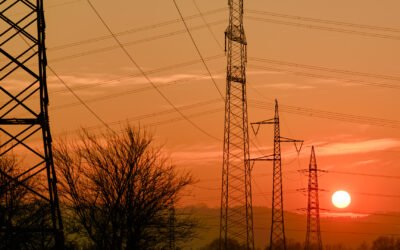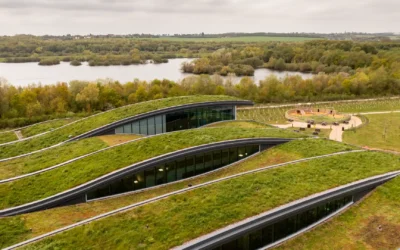• As the country is pushing to increase the share of renewables in the generation mix a number of issues including voltage instability and the loss of inertia have risen in the grid.
• Power Technology Research estimates that the market for synchronous condensers in Australia is likely to further grow in the future.
In Australia’s generation mix, fossil fuel held a majority share accounting for 71% of the total electricity generation, including coal (51%), gas (18%) and oil (2%) while the renewables contributed 29% of the total electricity generation in 2021. It is observed that the share of electricity generation from coal is declining as a result of shutdown of coal fired power plants as they could not compete with renewables in an energy only market. On the other hand, we have observed increase in the share of renewables and natural gas over the years in the generation mix of the country.
Recently, an ambitious target of reducing CO¬¬¬2 emissions by 43% of the 2005 levels by 2030 has been set by the newly elected government of Australia. The government has also pledged to significantly increase the share of renewables in the National Electricity Market (NEM) to 82% till 2030 which in turn would require annual renewable capacity additions of 1-2 GW from 2022 onwards till 2030 (including the capacity additions during the 2030).

Figure 1: Generation Landscape in Australia.
Source: Power Technology Research
Challenges Linked with Renewables
As the country is pushing to increase the share of renewables in the generation mix a number of issues including the voltage instability and the loss of inertia have risen in the grid. These issues need to be dealt with if Australia is to keep integrating renewables with the grid and achieve clean energy goals.
Voltage instability
Voltage instability is one of the challenges that arise whenever renewables are integrated with the electricity grid. Renewables, for instance wind and solar are by nature intermittent sources of energy that have a fixed lagging power factor. These generators are only capable of absorbing reactive instead of producing it (which in turn can be utilized by the grid for voltage regulation) leading to voltage instability issues.
Loss of inertia in the system
Another challenge that the grid faces as a result of integration renewables is the reduction of inertia in the system. Renewable generation as we know does not provide inertia to grid due to lack of moving parts as opposed to gas fired, oil fired, and coal fired power plants which provide inertia to the grid and in turn maintain reliability and stability of the grid.
Historical Landscape of FACTS in Australia
FACTS have been deployed in the electricity grids across the globe for over 60 years. As far as the Australian electricity grid is concerned, synchronous condensers have dominated the Australian FACTS market from the beginning owing to fast response time and adaptability of the technology. In 2016, STATCOMs entered into the Australian FACTS market which was a result of improvements in the power electronics and availability of semiconductor devices. A total of 1542 MVAR of STATCOM capacity had been installed in Australia till 2020. Despite the fact that STATCOM technology is far more sophisticated and refined but it is significant to note that SVCs still control majority of the FACTS market in Australia.

Figure 2: Technology split in the FACTS market of Australia (2012-2016).
Source: Power Technology Research

Figure 3: Technology split in the FACTS market of Australia (2017-2021).
Source: Power Technology Research
Emergence of Synchronous Condenser in Australian FACTS Market
Synchronous condenser which is a rotating machine connected to the electricity grid is capable of catering the lack of inertia and short circuit current. Australia has deployed SVCs and STATCOMs in the last two decades, but these FACTS devices do not resolve grid issues concerning the loss of inertia and short circuit capacity. So, in order to the tackle the loss of inertia, Australia has initiated deploying synchronous condensers across Australia. For instance, Australia installed its first synchronous condenser in 2012 at Musselroe Wind Farm. Later, in 2020 two synchronous condensers were installed at Davenport Substation and Darlington Point Solar Farm. In 2018, the Australian Electricity Market Operator assessed that a synchronous condenser is needed at the Kiamal Solar Farm which was commissioned by Siemens Energy in 2021 that has a capacity of 190 MVAR.
Similarly, Australian Electricity Market Operator intimated the Finley Solar Farm to install synchronous condenser in order to maintain in the grid operations which was later commissioned by ABB in 2021. Furthermore, in 2022 Victoria, Australia’s 209 MW Murra Warra II Wind Farm’s construction and long-term operation will be carried out by GE. The scope of the project also includes deployment of synchronous condenser along with the complete EPC delivery of the wind farm. Murra Warra II Wind Farm was required to deploy synchronous condenser due to constraints in Victoria’s electricity grid network.
Looking Ahead
As the countries are moving away from conventional generation towards generation from renewable energy resources, it is creating difficulties for the system operator such as voltage stability and inertia related issues. These issues led to the increase in the deployment of STATCOMs and SVCs in Australia specifically in the utility and railway sector in the last decade. But now the synchronous condensers are also establishing ground in the Australian FACTS market mainly due to increase in the deployment of renewables and reduction in the inertia of the system. Power Technology Research estimates that the market of synchronous condensers is likely to further grow in the future as Australia moves towards integrating more renewables with the electricity grid.
Flexible AC Transmission Service Overview
The research presented in this article is from PTR's Flexible AC Transmission service. For information about this service please submit a request shown below.
Contact Sales:
Europe
+49-89-12250950
Americas
+1 408-604-0522
Japan
+81-80-7808-1378
GCC/Rest of APAC
+971-58-1602441
More about our:
Flexible AC Transmission Systems Market Research
Recent Insights
US Elections: Consequences of a Second Trump Presidency for Energy Sector
The US is making strides to move away from fossil fuels and eventually decarbonize the energy sector. The White House aims to achieve 80% renewable...
Sustainability Across Sectors: Highlights from GreenTech Festival 2024
Recently, I had the privilege to attend and present at the Greentech Festival, an excellent event in the realm of sustainability. This influential...
US and EU Strategies in Smart Buildings
Download Service Overview The EU and USA aim to decarbonize their building sectors to meet emission reduction targets. Initiatives like the Home...


